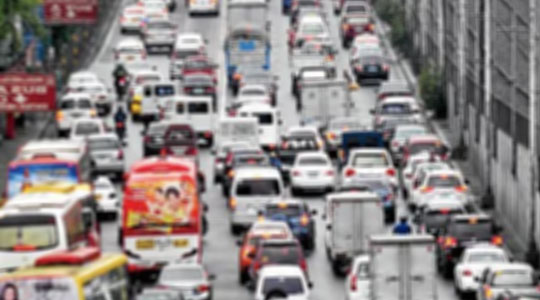MABABAWASAN ang economic cost ng trapik sa Metro Manila sa P2.13 billion kada araw sa taong 2022 mula sa P3.5 billion hanggang noong 2017, ayon sa Committee on Infrastructure (INFRACOM) ng National Economic and Development Authority (NEDA).
Mangyayari ito sa sandaling makumpleto ang mga proyekto sa ilalim ng ‘Build Build Build’ program ng administrasyong Duterte.
Inendorso ng INFRACOM na pinamumunuan ni Public Works and Highways Secretary Mark Villar para sa NEDA Board approval noong Agosto 5 ang resulta at rekomendasyon ng ‘Follow-up Survey on the Roadmap for Transport Infrastructure Development for the Greater Capital Region or the Roadmap 2’.
“With the Build, Build, Build projects now underway, the public can expect a significant reduction in traffic congestion in Metro Manila as some of the projects near completion,” wika ni Villar.
Sa pag-aaral ng Japan International Cooperation Agency (JICA) noong 2017 ay lumitaw na ang halaga ng trapik ay tumaas sa P3.5 billion dahil sa lumalalang traffic congestion sa Metro Manila.
Noong Setyembre 2014, inilagay ng JICA ang economic cost ng trapik sa Metro Manila sa P2.4 billion.
Sa technical assistance mula sa JICA, sinabi ng INFRACOM na in-update ng Roadmap 2 ang mga impormasyon at resulta ng ‘Roadmap for Transport Infrastructure Development for Metropolitan Manila and its Surrounding Areas (Regions III and IV-A)’ o ang Transport Roadmap, na inaprubahan ng NEDA Board noong 2014.
“Under the Roadmap 2, the impact of the Build, Build, Build program, as well as proposed additional projects, on the overall transport network performance of Mega Manila was analyzed for the short-term or by 2022, and for the long-term or by 2035,” ayon sa INFRACOM.
Ang transport projects na pinag-aaralan ay kinabibilangan ng 29 railway projects, 14 road-based public transport projects, 2 traffic management projects, 15 expressway projects, 9 bridge/flyover projects, at 38 urban road projects, na may total investment requirement na hindi bababa sa P2.8 trillion hanggang 2035.
“We know that Filipinos desire greater mobility. The Philippine Development Plan 2017-2022 also calls for efficiency in cities and connectivity between growth centers and lagging areas to promote growth and reduce regional disparities. This is why we are making our transport system convenient and efficient,” wika ni NEDA OIC-Undersecretary for Investment Programming Jonathan Uy.










Comments are closed.